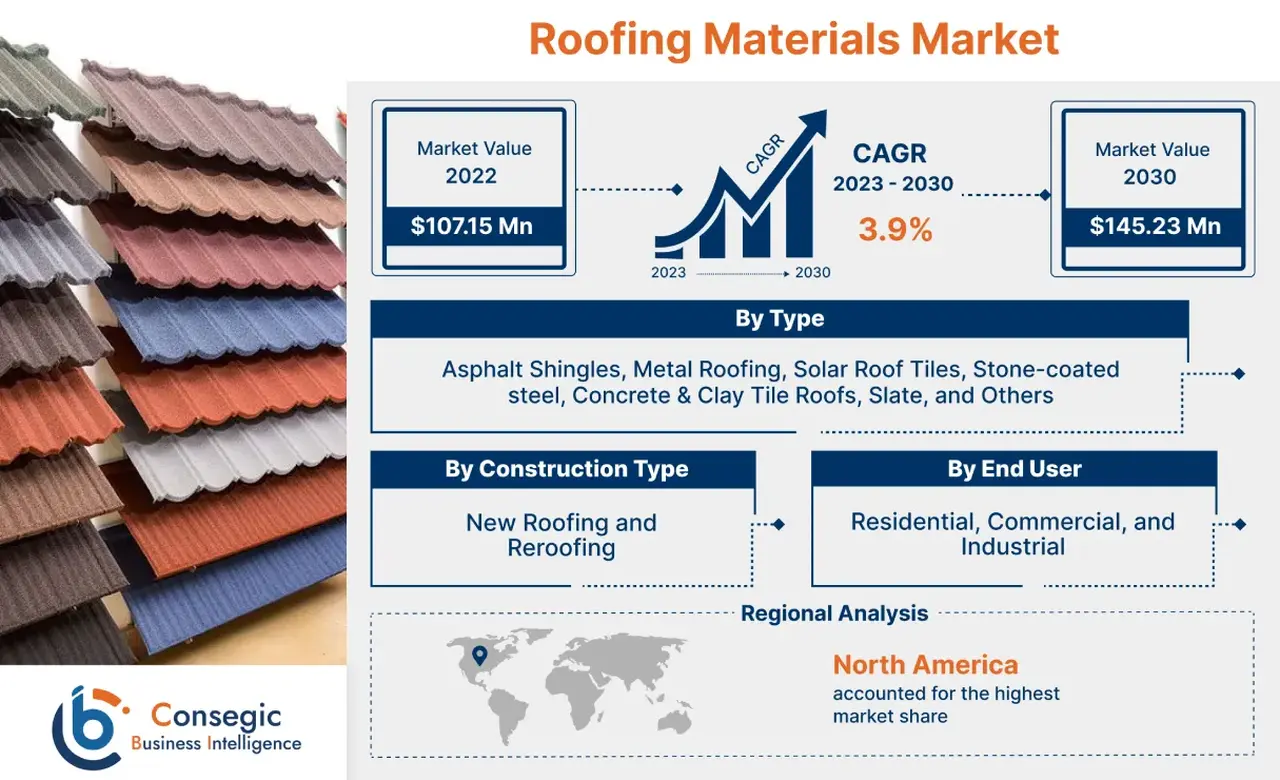Introduction
The global roofing materials market plays a crucial role in the construction industry, offering essential solutions for residential, commercial, and industrial structures. Roofing materials provide protection against environmental factors such as rain, wind, and sunlight, while also contributing to the aesthetic appeal and energy efficiency of buildings. The market is driven by ongoing urbanization, infrastructural development, and the increasing need for durable and sustainable roofing solutions.
Market Overview
The roofing materials market encompasses a wide range of products, including asphalt shingles, metal roofing, clay and concrete tiles, slate, and synthetic materials. The industry is influenced by factors such as climate conditions, regional building codes, and advancements in roofing technologies. Increasing demand for energy-efficient and eco-friendly roofing solutions is shaping the market, with manufacturers focusing on developing innovative products that enhance insulation and sustainability.
Market Drivers
Growing Construction Industry: Rapid urbanization and infrastructural development, particularly in emerging economies, are fueling the demand for roofing materials.
Rising Awareness of Energy Efficiency: The push for sustainable construction practices is driving the adoption of energy-efficient roofing solutions, such as reflective coatings and solar-integrated materials.
Advancements in Roofing Technologies: Innovations in materials, including cool roofs and impact-resistant shingles, are enhancing durability and performance.
Increasing Renovation and Remodeling Activities: Aging infrastructure and home improvement trends are boosting demand for roofing replacements and upgrades.
Stringent Building Regulations: Regulatory mandates focusing on sustainability and weather resistance are influencing market trends.
Market Restraints
High Initial Costs: Premium roofing materials, such as metal and solar-integrated roofs, come with higher upfront costs, which may deter budget-conscious consumers.
Fluctuations in Raw Material Prices: The volatility of raw material prices, such as asphalt and metal, can impact production costs and market growth.
Labor Shortages in the Construction Sector: A shortage of skilled labor for roofing installations can lead to project delays and increased costs.
Environmental Concerns: The production and disposal of certain roofing materials can have adverse environmental effects, leading to regulatory scrutiny.
Market Opportunities
Development of Sustainable and Recyclable Roofing Materials: The shift towards green construction presents opportunities for eco-friendly roofing solutions.
Rising Adoption of Smart Roofing Technologies: Innovations such as self-healing and temperature-regulating roofs can create new market segments.
Expanding Urbanization in Developing Regions: Emerging markets are witnessing significant growth in construction, offering lucrative prospects for roofing material manufacturers.
Government Incentives for Energy-Efficient Roofing: Policies supporting sustainable construction can encourage the adoption of advanced roofing materials.
Key Players
GAF Materials Corporation, Atlas Roofing Corporation, Owens Corning, TAMKO Building Products, Inc., Carlisle Companies Inc., Metal Sales Manufacturing Corporation, Wienerberger AG, CertainTeed Corporation, Boral Roofing, and IKO Industries Ltd.
Market Segmentation
By Type Asphalt Shingles, Metal Roofing, Solar Roof Tiles, Stone-coated steel, Concrete & Clay Tile Roofs, slate and others
By Construction Type New Roofing and Reroofing
By End-User Residential, Commercial, and Industrial
Market Regional Analysis
North America: Driven by stringent energy-efficiency regulations and rising renovation activities.
Europe: Growing demand for sustainable roofing solutions and advancements in building materials.
Asia-Pacific: Rapid urbanization and infrastructural expansion in emerging economies.
Latin America: Increasing residential and commercial construction projects.
Middle East & Africa: Infrastructure development and extreme climatic conditions influencing material preferences.
Market Recent Developments
Technological Innovations: Development of solar-integrated and self-cleaning roofing materials.
Strategic Collaborations: Partnerships among manufacturers and construction firms to enhance product distribution.
Sustainability Initiatives: Increasing investments in eco-friendly roofing solutions and recycling programs.
Regulatory Changes: New government policies promoting energy-efficient and resilient roofing systems.
The roofing materials market continues to evolve with advancements in material science, growing environmental concerns, and shifting consumer preferences. As the industry adapts to emerging trends, stakeholders must focus on innovation, sustainability, and regulatory compliance to capitalize on market opportunities.


Leave a Comment